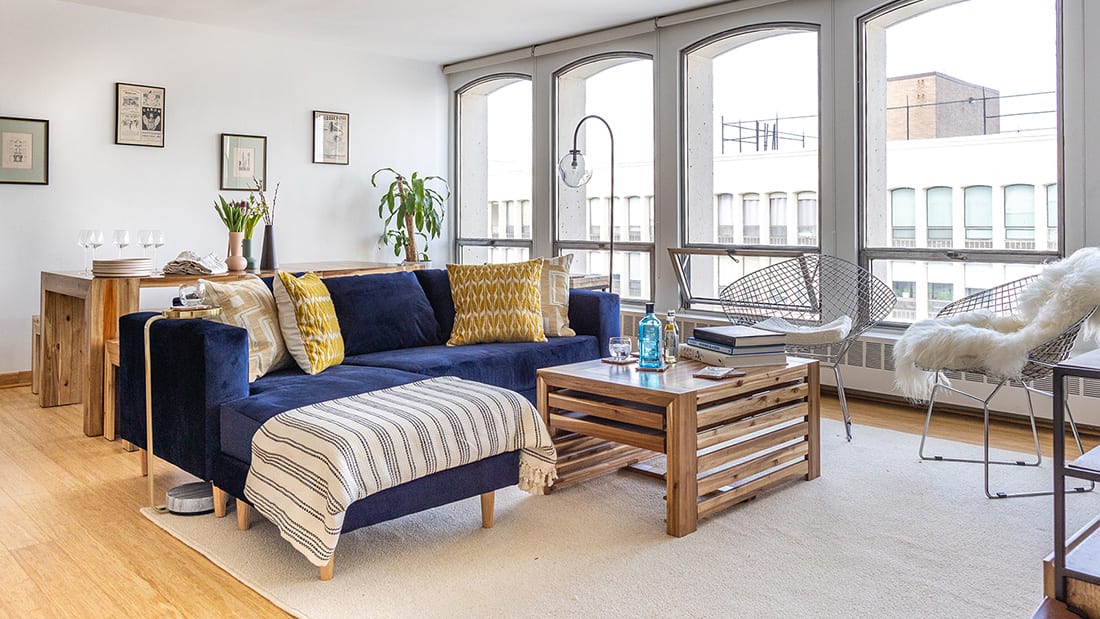绿色家园从可持续材料的基础开始
作者:LISA KLEIN
There has been a surge in interest in sustainability in recent years, finally making its way to the heart of it all – the home.
The construction industry uses many materials that are destructive to the environment and human health, but eco-friendly alternatives are cropping up for nearly every need to replace them.
“All predictions point to a continued surge in building worldwide, and it is imperative that we do so in a manner that moves towards regeneration versus extraction,” said Sheridan Foster, founder/CEO of Elemental Green, an online resource for sustainable building.
“Yet what is most compelling to many is that by choosing eco-friendly materials we can enjoy the proven health benefits that come with better choices,” she said.
Murky materials
From jewelry to travel options and second homes, affluent consumers are looking to be more sustainable in many aspects of their lives.
According to a Luxury Portfolio International report released in May 2022, a full 90 percent of those surveyed said sustainability was a major factor in their home search criteria, citing non-toxic and sustainable building and design materials as a major must-have.
“We have been very pleased to see that as consumers become more aware of the many-faceted advantages of sustainable residential construction, they are starting to demand that their designers and architects offer better solutions,” Ms. Foster said.
“New materials and technologies are being introduced at an increasing rate, and consumers are eager for innovative solutions.”
The construction industry is responsible for almost half of all global carbon dioxide emissions, according to the nonprofit, nonpartisan group Architecture 2030, 20 percent of that in embodied carbon – the emissions from extracting, manufacturing and transporting a product.
Three of the main materials used in modern construction – concrete, steel and aluminum – are also three of the biggest offenders, accounting for 23 percent global emissions every year.
“One of the most commonly used building materials is concrete and, unfortunately, it is also one which has a very high embodied carbon footprint,” Ms. Foster said.
“Cement, one of the main ingredients, is manufactured in high temperature kilns which are typically powered by fossil fuels,” she said. “And to make matters worse, it causes a chemical reaction that releases carbon stored in the limestone used in the process.”
Both steel and aluminum, while recyclable, also take massive amounts of energy to make.
There are also materials that are hazardous to health thanks to the volatile chemicals they contain, including treated wood, paint and floor finishes. Off-gassing happens after they are installed or applied, releasing toxic vapors into the home.

Bright future
Moving towards a construction future of recycled, reusable and renewable materials and overall greener homes is beneficial for the planet and for people.
“Making more sustainable choices not only reduces toxins out in the environment, but also very specifically for your family,” Ms. Foster said.
Concrete alternatives range from the innovative to the old-school. New products such as Hempcrete – blocks made by adding lime to hemp fibers – are both strong and lightweight.
Others are turning to centuries-old techniques for foundations, walls and floors, such as rammed earth, an ancient method of compacting raw materials, and straw bales that can be made from agriculture waste.
Natural wood is another age-old renewable building material that is getting new life via modern techniques.
Acetylation is a substitute to pressure treating wood with chemicals to make it stronger. Cross-laminating wood – combining thinner pieces in alternating layers – creates a strong and fire-resistant timber that is even being used to construct skyscrapers.
Bamboo, technically a grass, is an incredibly fast-growing sustainable option for both construction and flooring.
Fiberglass and mineral insulation can also be swapped for a natural version – sheep’s wool.
“It sequesters carbon in your home as well as providing air filtration, moisture management and sound insulation,” Ms. Foster said.
Even materials such as ceramic tile come in eco-versions, such as Fireclay tile, which is handmade in California from recycled content, and is itself recyclable. The company also uses all renewable energy in the manufacturing process and reuses water.
To show how all of these materials can be easily incorporated to renovate an existing home, Elemental Green recently completed its first #Ecorenovate project in Chicago using everything from bamboo products and Fireclay tiles to non-toxic paint and mattresses and sustainable furniture brands.
“Homes at all price points can be healthier, more affordable and better for the planet,” Ms. Foster said.






